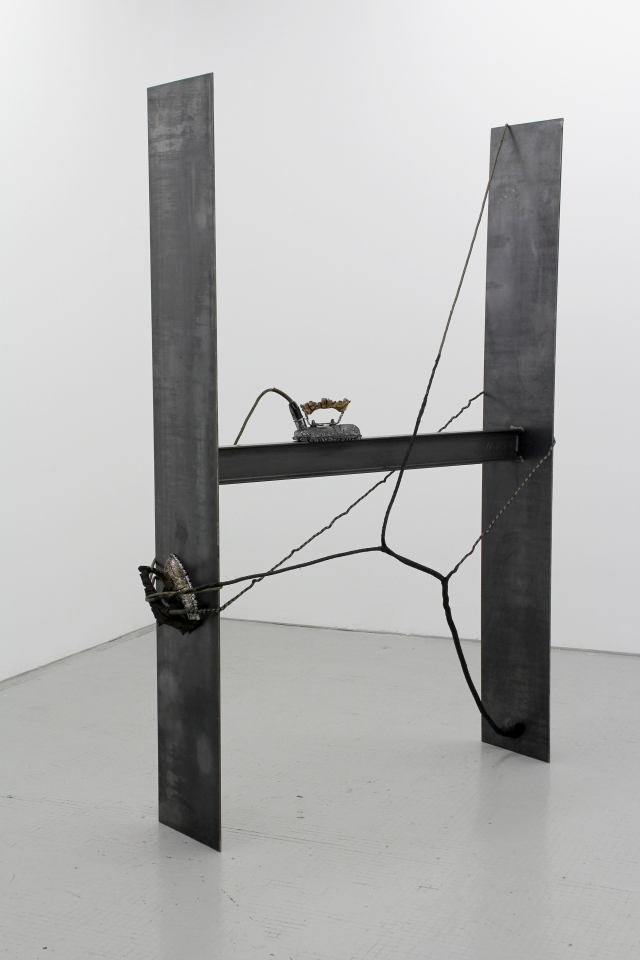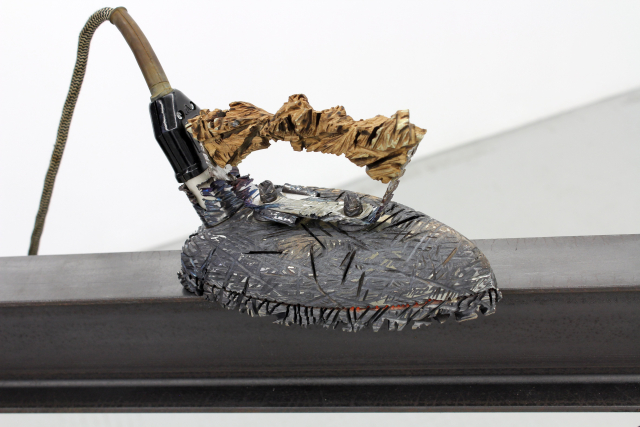Roman Stanczak, a flight from Venice
We met Roman Stanczak, the artist representing Poland at the 58th Venice Biennale. He turned an aircraft inside-out, for talking about our soul.
Roman Stanczak (born in Szczecin in 1969) is representing Poland at the 58th Venice Biennale. While we are writing, the artist is working on the body of an air plane. As it often happens in his work, the interior of the aircraft will be taken out in order to bring what is outside back inside. It may be a dimensional jump dedicated to the relationship between life and death; certainly Roman Stanczak is questioning what role his ‘flight’ will take in Venice, a water city, a return place, mirror of past power and of present one. We learn from his gallerist Michal Lasota, founder together with Zuzanna Hadrys of Stereo Gallery in Warsaw, that Roman Stanczak, who has been working with Stereo since 2013, have neither a studio nor any regular assistant. “I believe this approach has a lot to do with the economy of energy he is able to put into work later – explains Lasota (who, by the way, was also one of the founders of Friend of a Friend Warsaw – here is link to our writing about Friend of a Friend’s first edition). Roman Stanczak realises works only when there is a demand, an upcoming show or a commission. On a daily basis, he is drawing a lot.” Besides the metaphor that the work is actually staging, there is also a formal element that comes directly from the hands of the artist, who is a traditional yet updated sculptor. In 1997 he decided to give up the art system to then return to it 16 years later, in a very different context. The time away from the art has been a sort of ‘performance’, during which Roman Stanczak has fought for his own creative survival against the system – totally transformed by the tough Poland’s passage to the capitalist system -, and against himself, too. Here is why, in this instance, it is so important to hear the artist’s voice.

Roman Stanczak at work on the sculpture “Flight”, film still from Anna Zakrzewska’s and Lukasz Ronduda’s film “Flight”, 2019, Kijora Film.
How did you start doing art and why?
Roman Stanczak: In my case It was completely natural, and up to now I haven’t been doing different things than when I was a child. When playing football with friends I was usually the goalkeeper. It was so boring that meanwhile, I was peeling sticks, carving various characters out of them. It was interesting for as a child to create something on my own and I was attempting to do different things. Once I went to the woods at night to paint the full moon. A teacher from high school – Mr Szulc – noticed me. He was running a sculpture workshop in my home town and he pushed me later on to go to the art high school in Zakopane to study sculpture. I followed his advice. It was a jump into the unknown, far away from home.
How would you describe your installation for the Polish Pavilion at the upcoming Venice
Biennale?
Roman Stanczak: I would like to trigger emotions and reflections. I imagine that I am transferring petroglyphs from the cave out to daylight.

Roman Stańczak, Misquic 2, 2015, Saatchi Collection, London.
What is beauty for you? Does a piece of art need to be beautiful?
Roman Stanczak: Beauty lies within us and it only depends on us how we conceive the reality. In a beautiful soul everything appears full of colours. Beauty is an excess. I associate beauty with goodness, with good intentions, and with truth. Ugliness distorts and disrupts it. But I would not limit art to these categories. I am interested in a full spectrum – from the delicacy of children’s eyelashes to bayonets in the trenches. The range of emotions we experience is extremely wide and we live trying to keep them balanced. In a work of art one emphasizes the other, so we shall not limit art to the category of beauty.
Is the contemporary art’s system nowadays the same as it was when you started doing art? What has changed in the meanwhile?
Roman Stanczak: We are all subject to ‘the clock of time’ and its mechanisms. It is a process. But art is a delicate domain which may be lost easily. For example when we say “everything is art” – it’s not true. There is this idea of confusion in the act of creativity, present in contemporary thinking. I believe that things should be called by their name. Art doesn’t exist by itself and to exist it needs to be called by its name.

Roman Stanczak, Static Oblivion, 2015, Courtesy Stereo Warsaw
Do your pieces have a common subject matter? If so, what is it?
Roman Stanczak:v Yes, that is basic questions about the meaning of life, about death, and about the contrast between life and death.
Do you have any mentor?
Roman Stanczak: I had a few masters. I would point out Polish painter Tadeusz Brzozowski among them. I’ve chosen to trust every word he said [laughs]. But there are many other artists I admire and whose works make me happy. They are mainly expressionists from dramatic times of men entangled in history. Like Munch or Kubin.

Roman Stańczak, Static Oblivion, 2015, detail. Courtesy Stereo Warsaw
What does inspire you?
Roman Stanczak: It’s hard to say. I am dyslexic in my thoughts, what I see is mixed with the scent and memories at once. Generally I’d say that nature inspires me. And human faces.
What would you do if you weren’t an artist?
Roman Stanczak: I would be a baker! [laughs] I had many ideas. I conducted a kind of performance – thus expressing my own vision about the condition of art in our country in certain times. This way I could convey my own opinion about what I was interested in. It was a time when there was no place for art and artists. The system was based on commissions by the public administration. There was no way to find freedom and joy within it. But that time wasn’t wasted. I dedicated it to personal experiences, to the struggles I had with myself, with disease and with other people, and to find myself again.
November 7, 2019
